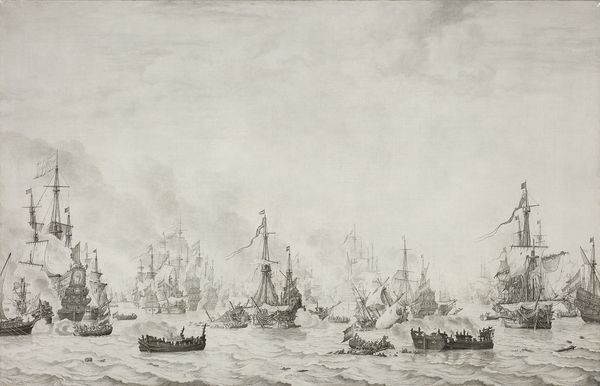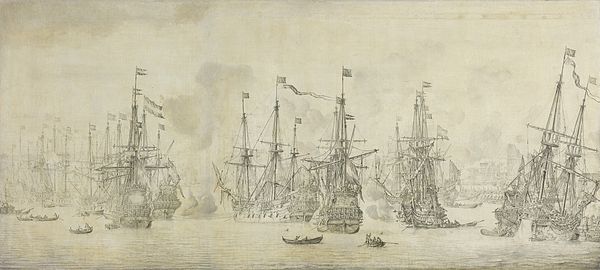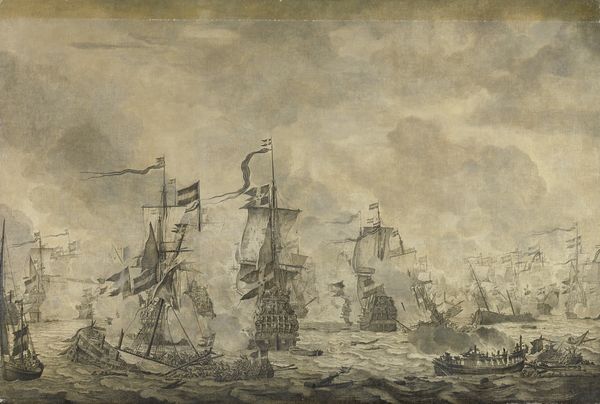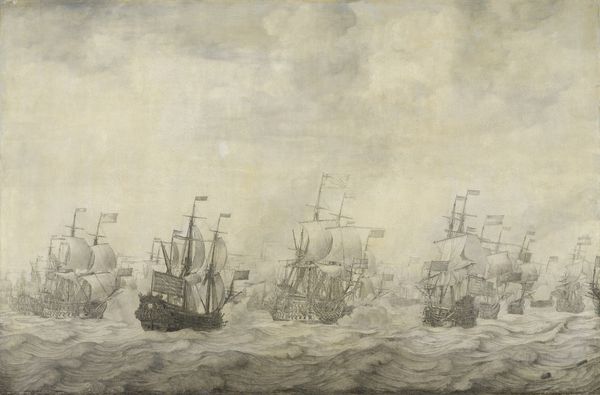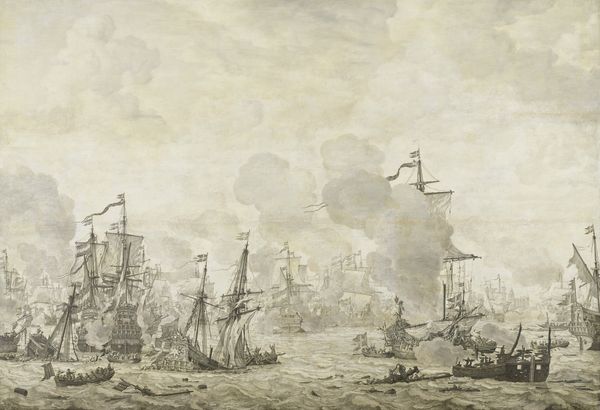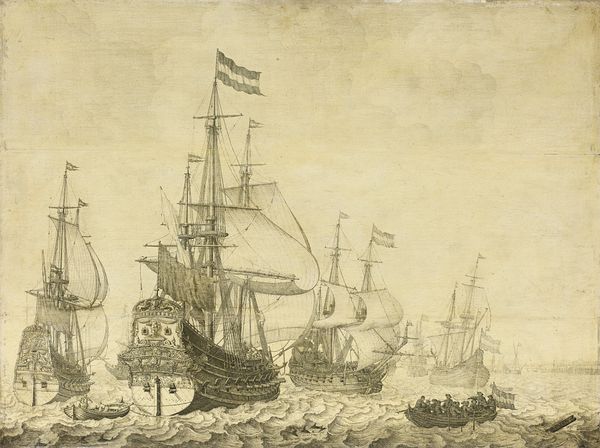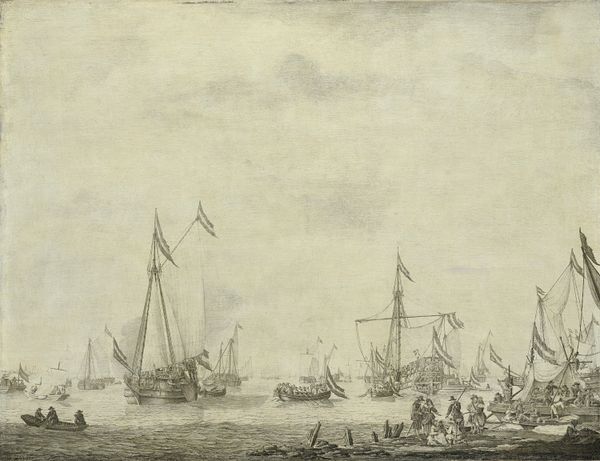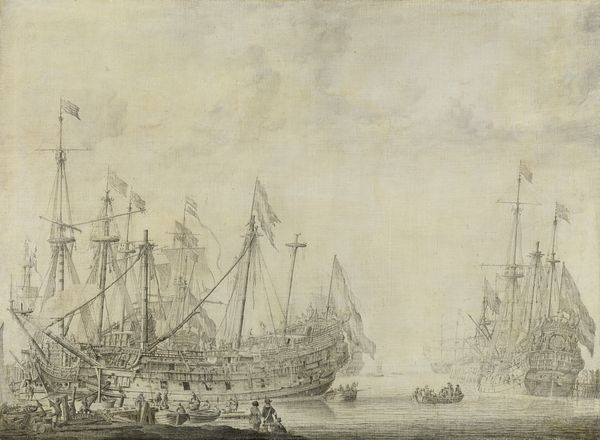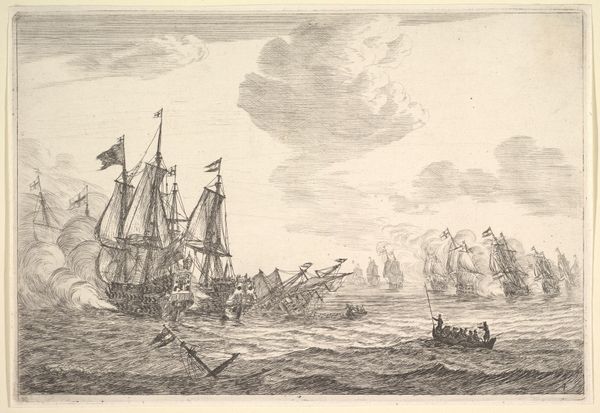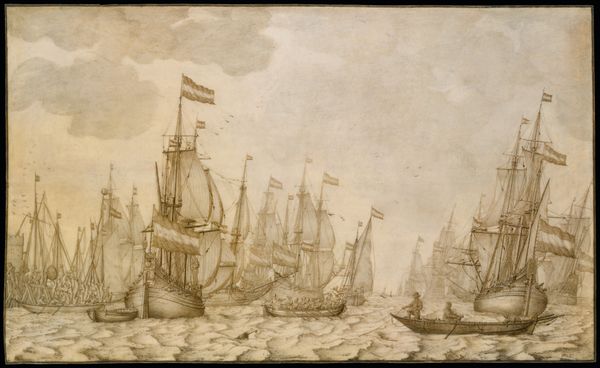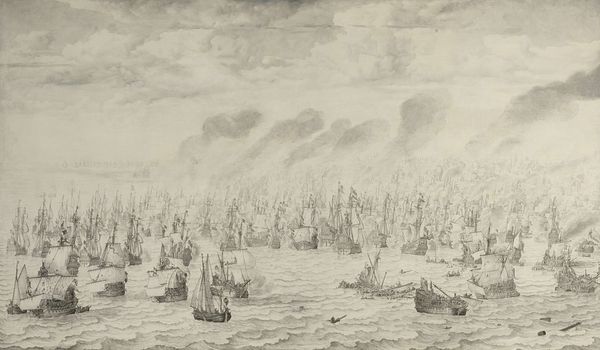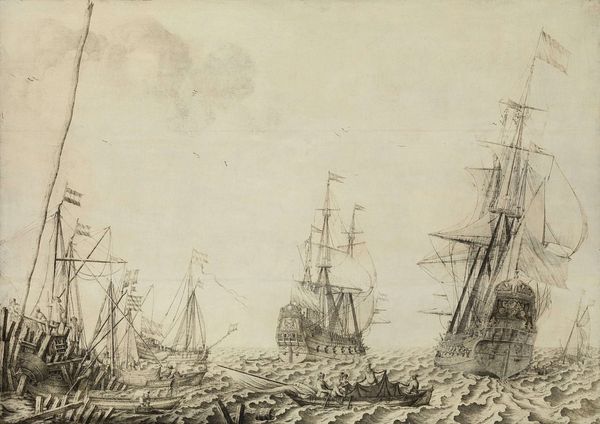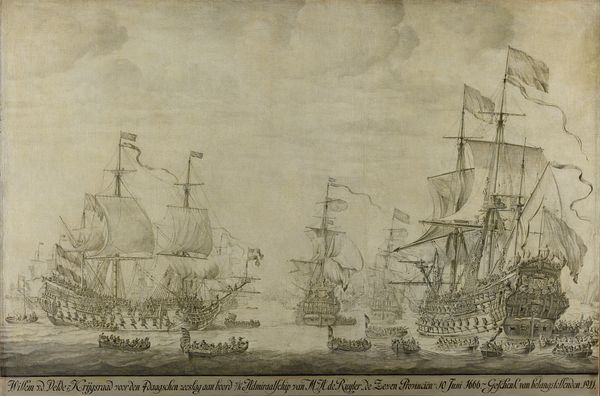
drawing, paper, ink
#
drawing
#
baroque
#
pencil sketch
#
landscape
#
study drawing
#
charcoal drawing
#
paper
#
ink
#
history-painting
Dimensions: height 123 cm, width 185 cm
Copyright: Rijks Museum: Open Domain
Curator: What a striking study of naval conflict! Willem van de Velde the Elder rendered this drawing titled, "The Battle of Dunkirk" in 1659 with ink and pencil on paper. Editor: It evokes a powerful atmosphere—a brooding sky hangs heavy over the scene, the fleet battle rendered in stark monochromatic tones. The details somehow amplify a broader sentiment: strife, power... and maybe a touch of mournfulness. Curator: It is compelling how Van de Velde utilized a traditionally precise medium like drawing to capture the dynamic chaos of battle. You feel the spray of the sea and intensity of the naval clash! It's a visual memory of cultural anxieties and political might of the Dutch Republic. Editor: There's definitely a narrative here. I think the perspective—the low vantage point looking up at these massive ships—creates an immediate sense of Dutch naval strength. Consider the Baroque period—it aimed to overwhelm its audiences through grandiosity; its clear Van de Velde shares this aesthetic. Curator: Indeed, the image functions beyond just its historical record; ships have, across cultures, stood as metaphors for journeys, national ambition, and the collective will. This assembly of Dutch vessels symbolizes both their maritime prowess and collective security during that period. One can read those intentions quite clearly in the fleet. Editor: Knowing the Dutch naval fleet played a crucial role in shaping the economic and political landscape of Europe during this era contextualizes this study. Drawings like these played a public role by visualizing that very dominance and shaping the political imaginary of the Dutch identity. I mean, beyond technical studies, the symbolic charge is impossible to dismiss. Curator: It all points back to how potent the simple drawing can be! The drawing not only served as a visual record, but its symbols evoke the cultural memory of an ascendent marine power, with their aspirations projected onto the waves. Editor: A visual shorthand, a potent political instrument… "The Battle of Dunkirk," even in its muted palette, makes a bold statement about cultural memory and political spectacle.
Comments
rijksmuseum about 2 years ago
⋮
In 1639 Maerten Harpertsz Tromp prevented the Spanish fleet from leaving the harbour at Dunkirk with a blockade of twelve ships. Van de Velde has depicted most of the Dutch vessels with their prows pointing towards the enemy armada. With a remarkable eye for detail, he rendered in pen the ships’ counters or transoms – the stern carvings from which the individual vessels can be identified.
Join the conversation
Join millions of artists and users on Artera today and experience the ultimate creative platform.

